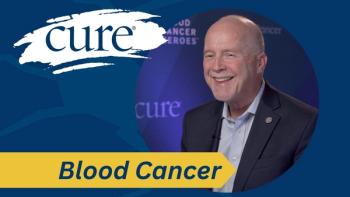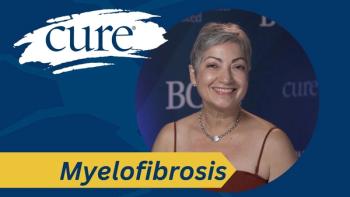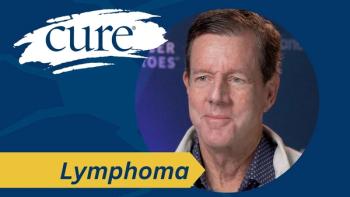
"Count Me In": How Patients Can Contribute to a Metastatic Breast Cancer Treatment Research Project
People across the nation are participating in the Metastatic Breast Cancer (MBC) Project to help researchers steer the approach in fighting the disease.
Despite some advances in the treatment of metastatic breast cancer, the disease remains incurable, and researchers are hoping that a new nationwide effort to encourage patients to share their tumor samples and clinical information will lead to new discoveries and better treatments.
The Metastatic Breast Cancer (MBC) Project was launched in October 2015, and more than 2,000 patients from all 50 states have enrolled in the study over a seven-month period, according to lead study author Nikhil Wagle, who presented an update on the initiative at a press briefing focused on precision medicine at the 2016 annual meeting of the American Society of Clinical Oncology (ASCO), a gathering of over 30,000 oncology professionals in Chicago. Researchers credit their use of social media and the engagement of numerous advocacy groups to support and promote the effort for the project’s success to date, enabling them to recruit patients directly, rather than via patients’ individual physicians and institutions.
Having access to more tumor samples would help greatly to improve understanding of this disease, ideally ones that are linked to clinical information, explained Wagle, a medical oncologist at Dana-Farber Cancer Institute and an associate member of the Broad Institute in Cambridge, Massachusetts.
“However, most tumor samples have not been available for these types of studies, largely because the vast majority of patients are treated in the community setting. In fact, most patients have never been asked if they would like to contribute a tissue sample or medical information for biomedical research.”
The MBC Project is hoping to change that paradigm. And what’s more, the researchers hope this proof-of-concept study may serve as a model for patient-driven research in other cancer types.
“Partnering directly with patients through social media enables rapid identification of thousands of patients willing to share tumors, saliva and medical records to accelerate research,” said Wagle.
To enroll, interested patients visit the
Once patients are signed up, they are asked to complete a 16-question survey about their cancer and treatment and an online consent form to permit researchers to obtain copies of their medical records and perform sequencing studies on their tumor and germline DNA. More than 1,100 enrollees have consented thus far, the researchers reported. When consent is provided, they request the patient’s medical records and a portion of their stored tumor tissue. These tissue samples undergo genomic analysis, and the genomic information is analyzed in the context of clinical data. Patients are also asked to provide a saliva sample, using an at-home collection kit.
Median age of participants is 54 years, based on an analysis of the 1,227 patients who enrolled during the first three months of the study. Median time from initial diagnosis to progression to MBC was two years, with 424 patients presenting with metastatic disease at diagnosis. At this three-month analysis, 87 patients reported having MBC for more than 10 years, and 57 percent indicated that they had had an “extraordinary response” to a therapy.
Already, the information gathered is yielding intriguing research questions. For example, “one of the groups that have emerged as we looked at the patient-reported data is exceptional responders to chemotherapy,” said Wagle. “We don’t typically think of chemotherapies as targeted therapies that go after a particular feature in a patient’s tumor; yet, we see over and over again, a relatively small group of patients who say that they have an exceptional response to a particular chemotherapy. We feel that there might be some genomic or biological mechanism for that, and because of the information that patients are reporting, we will try and answer that question.”
Wagle stressed that all of the de-identified genomic and clinical data generated will be shared widely for other researchers to use: “It may not be my team that makes the next big discovery. We want other researchers to look at this, so that we can increase our chances of shared success.”
Alongside this promising research effort, a social media movement has emerged that emphasizes the partnership between researchers and patients, Wagle added.
“Over the past few weeks, we have been seeing more and more of these ‘selfies’ where patients have been saying, ‘count me in,’ showing pictures of themselves with their saliva kit and expressing pride and optimism about their participation in a project they hope will lead to better treatments for a disease that has a median survival of only three years and accounts for 7 percent of all deaths from cancer in the United States annually,” said Wagle. Participants feel that this research project is giving them hope and a sense of belonging. “As someone who does not live near a research center and therefore cannot easily participate in trials, I finally feel like I can contribute,” said one participant from Lake Tahoe, California.
Another from Houston, Texas said, “I want to live and watch my children grow up, but if I can’t, then I want to have a legacy and a cure.”
Panel moderator and ASCO spokesperson Sumanta K. Pal said that the MBC Project “offers patients a seamless way, using social media and other platforms, to provide their clinical information and specimens.”
“If this paradigm continues to enjoy the same success it has thus far, with incredibly rapid enrollment, this patient-driven model is something we should implement across disease types.”




